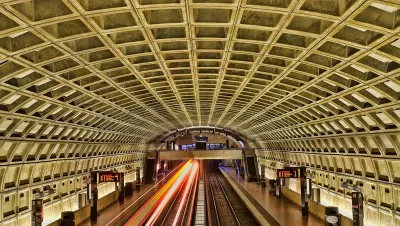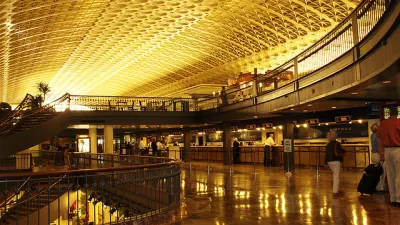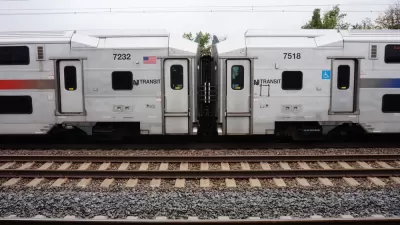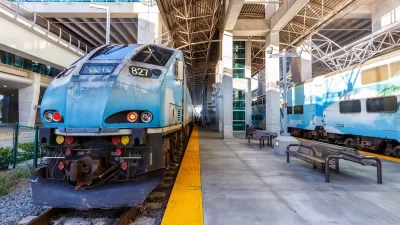The region's transit providers are gearing up to provide enhanced service, shorter headways, and reduced or free fares as more people return to public transportation.

Washington, D.C.'s regional transit agencies are working to resume and improve service as workers start returning to their pre-pandemic commutes. As reported by Luz Lazo, "[m]ost transit systems in the region are transitioning to normal operations after reducing service 16 months ago at the onset of the pandemic. Some are adjusting or restructuring routes, while others are adding amenities and cutting the cost of riding."
Ridership in the region "has started to bounce back, although it hasn’t returned to where it was pre-pandemic. Local bus systems are still 50 to 70 percent below previous levels, according to transit officials, while Maryland and Virginia commuter trains are largely empty — down by about 85 percent."
D.C. Metro "is rolling out service improvements for bus and rail users, as well as a reduction in fares this fall. Beginning in September, weekend rides on Metrorail will be a flat $2, a $1.50 transfer fee between rail and bus will be lifted and the price of a seven-day regional bus pass will drop by $3 to $12." The agency also plans to increase frequencies on their most popular train lines, expand operating hours, and restore or increase bus service on 46 routes.
Maryland's MARC trains and commuter buses will also bring back full service and allow cyclists to bring their bikes on trains in order to expand first-mile/last-mile options, while the popular downtown D.C. Circulator will be free "at least through Sept. 30."
The article details the changes planned by several other transit systems in the area as they gear up to resume full service, reducing or eliminating fares, and expanding frequency and service areas.
FULL STORY: Planning a return to the office? The D.C. area’s transit systems want to get you there.

Study: Maui’s Plan to Convert Vacation Rentals to Long-Term Housing Could Cause Nearly $1 Billion Economic Loss
The plan would reduce visitor accommodation by 25,% resulting in 1,900 jobs lost.

North Texas Transit Leaders Tout Benefits of TOD for Growing Region
At a summit focused on transit-oriented development, policymakers discussed how North Texas’ expanded light rail system can serve as a tool for economic growth.

Why Should We Subsidize Public Transportation?
Many public transit agencies face financial stress due to rising costs, declining fare revenue, and declining subsidies. Transit advocates must provide a strong business case for increasing public transit funding.

How to Make US Trains Faster
Changes to boarding platforms and a switch to electric trains could improve U.S. passenger rail service without the added cost of high-speed rail.

Columbia’s Revitalized ‘Loop’ Is a Hub for Local Entrepreneurs
A focus on small businesses is helping a commercial corridor in Columbia, Missouri thrive.

Invasive Insect Threatens Minnesota’s Ash Forests
The Emerald Ash Borer is a rapidly spreading invasive pest threatening Minnesota’s ash trees, and homeowners are encouraged to plant diverse replacement species, avoid moving ash firewood, and monitor for signs of infestation.
Urban Design for Planners 1: Software Tools
This six-course series explores essential urban design concepts using open source software and equips planners with the tools they need to participate fully in the urban design process.
Planning for Universal Design
Learn the tools for implementing Universal Design in planning regulations.
City of Santa Clarita
Ascent Environmental
Institute for Housing and Urban Development Studies (IHS)
City of Grandview
Harvard GSD Executive Education
Toledo-Lucas County Plan Commissions
Salt Lake City
NYU Wagner Graduate School of Public Service





























